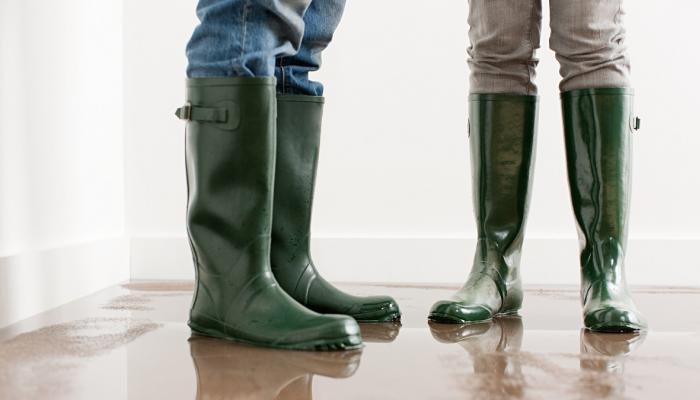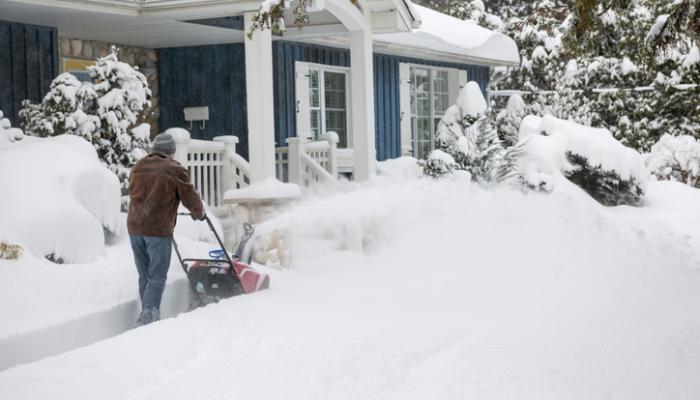In today's environmentally conscious world, making eco-friendly home improvements is both a practical and responsible choice. This article touches on sustainable upgrades that can reduce environmental impact while improving overall home efficiency and living comfort.
What does “eco-friendly” mean?
When it comes to improving your home, "eco-friendly" simply refers to actions, products or practices that are not harmful to the environment. The main goal is to reduce the ecological footprint of a home by minimizing energy consumption, using sustainable materials and decreasing waste and pollution.
» CALCULATE: Calculate your VA Loan savings
5 Green Home Improvements to Make Your Home Eco-Friendly
Eco-friendly home improvements prioritize renewable and recyclable resources, harness natural energy sources like solar power, and aim to improve indoor environmental quality. Whether it's through installing energy-efficient appliances or incorporating water-saving fixtures, these improvements are designed to reduce the home's impact on the environment and enhance the health and comfort of its residences.
Here are 5 ways to improve your home and the environment:
1. Solar Panel Installation
Solar panels are a great way to use renewable energy from the sun and reduce your carbon footprint. It also can reduce the electricity cost of your home.
Solar panels convert sunlight into electricity, offering a renewable and clean energy source. Modern solar panel systems can be integrated aesthetically into your home's design. They are also a long-term investment, often providing energy for 25 years or more. In many regions, homeowners can benefit from government incentives or rebates for installing solar panels.
2. Energy-Efficient Appliances
Upgrading to energy-efficient appliances like refrigerators, washing machines, dishwashers, and HVAC systems can lead to substantial energy savings. These appliances use advanced technology to minimize electricity and water usage without sacrificing performance.
Energy Star-rated appliances meet strict efficiency guidelines set by the U.S. Environmental Protection Agency and the U.S. Department of Energy, helping consumers save money and reduce their environmental impact.
Answer a few questions below to speak with a specialist about what your military service has earned you.
3. Rainwater Harvesting Systems
Installing systems to collect and reuse rainwater for garden irrigation and other non-potable uses can conserve water and reduce dependency on municipal supplies.
These systems collect rainwater from roofs and store it for later use, such as watering gardens, flushing toilets or even for laundry and bathing if properly treated. Rainwater harvesting reduces the demand for municipal water supply and helps manage stormwater runoff, decreasing the risk of erosion and flooding.
It's a practical solution in areas with water scarcity issues or for those looking to reduce their water bills.
4. Green Roofing or Green Walls
Green roofs, covered with plants, can improve insulation, reduce heat loss in winter and keep homes cooler in summer. It can also extend the roof’s lifespan and provide a habitat for wildlife.
Green walls, or living walls, are vertical structures that are either partially or completely covered with plants. They can improve air quality, reduce indoor air pollutants and enhance the aesthetic appeal of a building.
5. Smart Home Technology
Integrating smart home technology like thermostats, lighting systems and energy monitors allows for precise control over your home's energy consumption. Smart thermostats can learn your schedule and adjust heating and cooling for optimum efficiency. Smart lighting can be programmed to turn off when rooms are unoccupied.
Energy monitors provide real-time feedback on energy usage, helping identify areas for improvement. This technology not only makes life more convenient but also promotes a more sustainable lifestyle.
The VA Energy Efficient Mortgage
VA Energy Efficient Mortgages (EEM) are a great option to pay for certain improvements that increase a home’s energy efficiency. There are various types of improvements that qualify for a VA EEM, including solar panels, new insulation and weatherproofing.
Talk with a Veterans United loan expert about your energy efficiency options today.
Related Posts
-
 How Often Should You Shop for Homeowners Insurance?You should try to review your homeowners insurance options at least once a year. Here's a guide on how often you should shop and compare home insurance.
How Often Should You Shop for Homeowners Insurance?You should try to review your homeowners insurance options at least once a year. Here's a guide on how often you should shop and compare home insurance. -
 Five Essential Tips for Selling Your Home This WinterWinter is usually a slower time for real estate, but it also provides some unique opportunities to show off your home to particularly motivated buyers. Here are five tips for selling your home in a winter wonderland.
Five Essential Tips for Selling Your Home This WinterWinter is usually a slower time for real estate, but it also provides some unique opportunities to show off your home to particularly motivated buyers. Here are five tips for selling your home in a winter wonderland.


